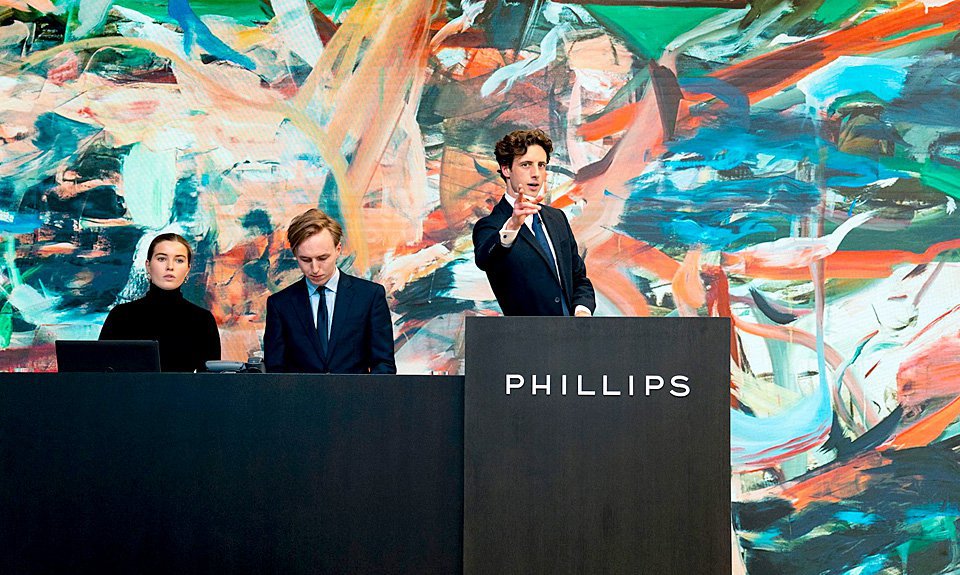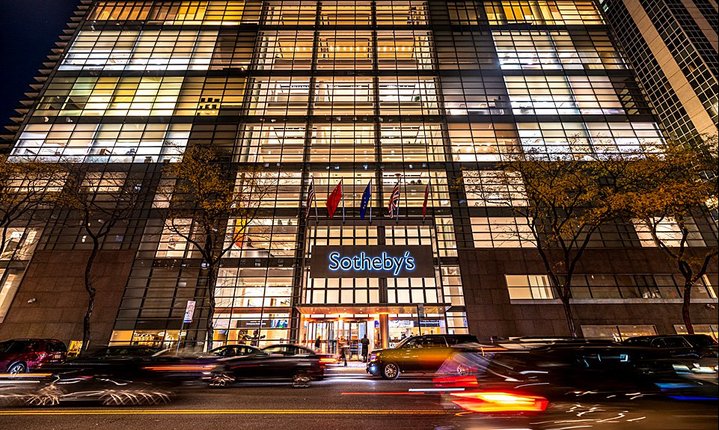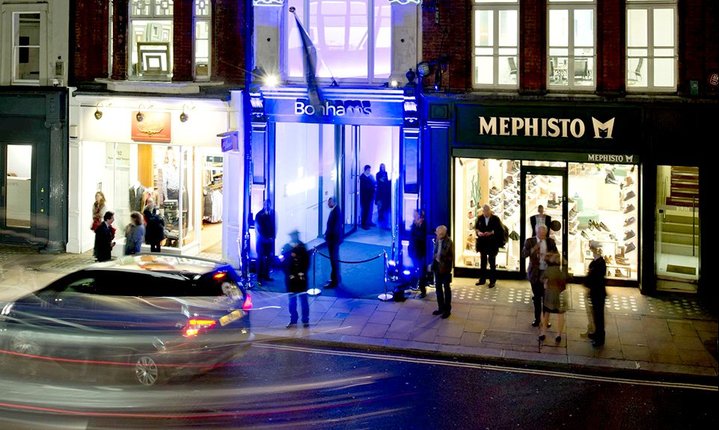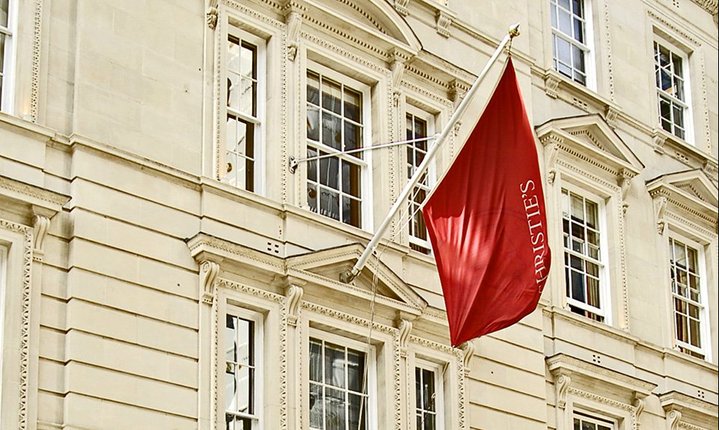Frieze Moscow, Anyone?

Phillips auction house. Photo: Phillips
With financial sanctions hitting, Russian art auctions cancelled this Spring, what are the prospects for the Russian art market?
As an international art dealer in the Russian field, having spent the best part of three decades travelling throughout both Russia and the Ukraine, immersed in their respective cultures, I find myself deeply shocked and distressed by the recent events. Like many, I went into the art world out of a sense of passion and curiosity, then one day it become my main livelihood. It was a job alongside all the other responsibilities of life, raising a family and securing my future. However, my thoughts like most over the past month have been along the lines of how can I even think about the art market when bombs are falling?
Last month, the Spring Russian art auctions in London were called off as auction house executives scrambled to get on top of the new economic sanctions, Russophobia was setting in, understandably, and there was – and is still - a state of shock and disbelief. Russian owned Phillips donated all the revenues from their marquee contemporary sales to the Ukrainian Red Cross to stop a stampede of buyers away from their saleroom threatening to boycott the auctions.
As time passes and the invasion continues, however, all of us in the Russian art market find ourselves forced to negotiate the new reality which itself is in flux. Where do we pick off? With economic sanctions hitting full throttle across the board, the financial infrastructure between Russia and the West itself crumbling - not speaking of sanctioned Russian art collectors – the market for Russian art in the West finds itself under threat of near extinction, at least for the moment. It’s a market in which there are many dedicated and honourable dealers, gallerists, and auction house specialists as well as art journalists and art services personnel working both within and outside Russia.
Many years ago, until the late 90s, the Russian art auctions in London were all that existed of the Russian art market. In other words, the market for Russian art only existed outside Russia. This was extreme, but so was the Cold War. Then, quickly a parallel existence was created, dealers, galleries and auction houses sprang up mainly in Moscow and some in St Petersburg. Headline prices were created in London but often masterpieces changed hands in Russia for similar sums – sometimes more - under the radar, it was not something anyone could quantify. Because of its visibility, most unquestionably saw London as the centre of the Russian art market, but some dealers regularly bought art there to resell in Moscow at a higher price, and private sales in Moscow were booming too. Was London ultimately servicing a market which lay elsewhere?
And so, it happened that since the establishment of private art trading in Russia after the breakup of the Soviet Union there were two markets: an external (international) one and an internal (domestic) one. They were parallel universes. Nothing unusual about this, there is a domestic market in France, in Germany and so on. Of the market for Russian art there was both a domestic and what I would call semi-internationalised trade. Semi-internationalised as in London the buyers were mostly of Russian origin, the sellers more diverse. One key to London´s continued success was in attracting for sale from around the world a wealth of artworks which had left Russia after the Revolution and paintings by artists who had emigrated then, such as Natalia Goncharova and Mikhail Larionov.
Yet it is worth noting, despite the vast wealth generation in Russia, its love of art and a collecting legacy stretching back centuries, which did not even exist in China, Russia singularly never wanted to host the kind of stellar international art market which it could perhaps have, had things been different. A missed boat maybe, the coffers of the state authorities could have enjoyed a good revenue stream of taxes on imports and exports of art, not to mention sales within the country. And there would have been by now far more collections of international contemporary art in Russia, the absence of which surely points to some national cultural deficit.
But perhaps I miss the point. With Russia one foot was always in, and one foot was always out of the internationalised commercial art world, and as such you cannot limp along into a market and make it thrive. In many other fields of industry, Russia was more embracing of capitalism, but with art and culture it seemed, at least to those of us on the outside, indecisive and on the back foot. There is also a sense that after they had sampled the international art market in the mid 2000s, Russian art industry insiders quickly were disillusioned with what they saw as the manipulations of the contemporary art market in the West. They did not share the same tastes as the movers and shakers of the global art market. Perhaps also their newness to it all had left them open to being misled when they did not take the reins and build a sustainable presence at the top of the global art market. There were simply not the drivers of global taste.
Over the past two decades Russian laws governing the export and import of Russian art went through various phases of being more, or less conservative, but the authorities never went close to supporting an internationalisation of the market. There was no Basel or Frieze Moscow, neither the Russian authorities nor the Western art fair moguls committed to this vision. In many ways this has hampered the market for Russian contemporary art itself, as despite the love affair with Russia that Westerners had in the early 1990s and then again around 2007 when Russia was booming economically and its collectors were visible, soon Russian artists, collectors, dealers became disillusioned. The whole Russian art scene remained distinctive and remote. Before it had seemed inaccessible in the West, and it became even more so.
Fast forward to the present. With the financial sanctioning by the West these parallel universes are being pushed yet further apart. How will this impact the Russian art market? We have seen how in London things have stalled. Internally in Russia, with the bounce back of the rouble after its drastic slide in February, there is a sense that the market is holding up to some extent at the top end but for how long? For many years now there has been a well-defined sense of the middle market and Russian masterpiece market, the former being notoriously tough, the latter has proved more resilient: rareity has a premium. Outside Russia, there have always been international collectors interested in Russia´s greatest artists, such as Natalia Goncharova whose work has been often sold in flagship global art auctions not only within Russian sales. If prices do recalibrate in London, it might bring opportunities for international collectors who had previously been priced out of the market. In Russia, even with the sanctions and the rift with the West widening the market will of course carry on regardless.
Back in London people are saying (I quote) the Russian art market is dead, others are saying the Russian art market will come out stronger than before and others are sitting on the fence, waiting for more signs. There has never been a time of greater uncertainty. During this hiatus, the private Russian art market will continue despite the lack of auctions and in Moscow art trade continues. People always need to sell art, and there is always someone who will be there to buy it. I remember a conversation once while at lunch in the café at Sotheby´s in London. About selling art, during crises. My Russian lunch companion was telling me how people sold art even during the Leningrad blockade in the 1940s. I was shocked to imagine it, but there is always a market for art.








